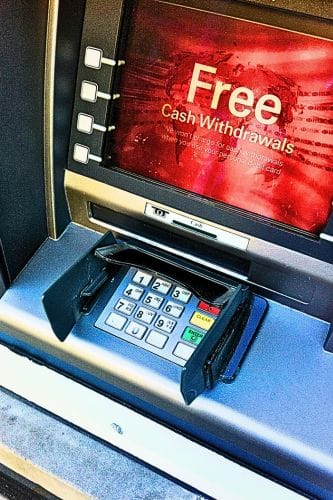The government’s central mission is to grow the economy, and every strong economy relies on effective payments. Payment systems and providers allow money to flow through the economy, enabling the exchange of value on which economic activity relies.
The UK National Payments Vision was published in October 2024. It’s 40 pages long and can be found at https://www.gov.uk/government/publications.
A trusted, world-leading payments ecosystem delivered on next generation technology, where consumers and businesses have a choice of payment methods to meet their needs.
National Payments Vision
A High-Level Overview of the Payment landscape
First, we are not considering wholesale payments, and the UK National Payments Vision makes it clear in section 1.24 that the actions set out in the vision are predominantly focussed on retail payments. Retail payments are those made by individuals and businesses (typically high in volume and low in value), rather than wholesale payments between financial institutions and with the Bank of England (typically low in volume and high in value). We are only considering retail payments, and for the avoidance of confusion, we should also make note that payments made at retailers is a subset of retail payments.
All clear?
What then is a Retail Payment?
Payments made to Retailers
A Customer visits a Merchant and makes a purchase, which results in a Payment being made. The Merchant has no particular interest in knowing the identity of the Customer, and the purchase is usually a single, one-way transaction. Refunds and Disputes are not a part of the initial transaction process, and are handled and processed separately.
Payments made to Service Providers
Customers are usually known to Service Providers, because there is generally going to be a contractual relationship between the two. Examples of Service Providers would be utility companies, mobile phone operators and subscriptions, where the money tends to flow from the Customer to the Service Provider. Again, money flowing from the Service provider to the Customer would only be necessary for Refunds and Disputes.
In contrast to payments made to Merchants, payments made to Service Providers will be allocated to an internal or ledger account held by the Service Provider in the name of the Customer.
Payments made to HMRC
Payments made to HMRC are to all intents and purposes, Account-to-Account transfers. The “Customer” is in receipt of no direct goods or services, and the provision for a Tax Refund is already built into the Customer-Service Provider relationship in a way that Refunds and Disputed transactions are not!
Summary
Payments made to Retailers are essentially anonymous and one-way, payments made to Utilities (for example) are based on an established and ongoing relationship and are one-way, payments made to HMRC are based on an established and ongoing relationship, and value transfers take place in both directions.
These are three fundamentally different, but far from obscure payer-payee relationships, each of which will inevitably demand a different set of payment requirements. The National Payments Vision makes very little reference to the varied requirements of the people and organisations that use the payment ecosystem, to the point where it is very close to making the assumption that a payment is just a payment, and one size fits all.
The National Payments Vision approach
Every strong economy relies on effective payments, and payment systems and providers allow money to flow through the economy, enabling the exchange of value on which economic activity relies.
The National Payments Vision outlines three key pillars designed to guide future activity:
- innovation
- competition
- security
Innovation must be at the heart of UK payments, and deliver solutions to enhance the lives of consumers., and support the growth of UK businesses and the economy. Competition is key to enabling a diverse ecosystem, providing individuals and businesses with choice. The security and safety of our payment systems is critical if they are to enjoy widespread consumer and business acceptance.
Is it possible that there is an element of contradiction or conflict in the Government’s Vision paragraph? On the one hand we are looking to a future where the UK is a dominant force in the payment game with innovation being key to unlocking the benefits of next generation technology, and on the other hand, payments are recognised as being of a global nature, and so the international outlook is important.
The Government has also provided additional direction on priority initiatives in the retail payments area, like Open Banking and tackling fraud.
Strengthening the Foundations?
The government’s vision is for a “trusted, world-leading payments ecosystem delivered on next generation technology”, providing a resilient and reliable set of services for consumers and businesses.
In paragraph 2.5, we read that the Prime Minister is clear that payment service regulations should support growth and unlock investment. Wise words, but are we being told here that growth is dependent on the payment service and not the payment? I see no real challenges to organisations being paid by the current banking and payments infrastructure – what I do see as a barrier to growth are the large organisations that demand payment from consumers up front but pay their suppliers on 90-day terms! This is not a payment system issue. Also, would I be off the mark if I were to suggest that the investment that we are looking to unlock is actually the investment in new payment service infrastructure?
The lack of a strategic vision in payments is being addressed by the National Payments Vision that is adopting the position of all retail payments being the same, and then explicitly legislating for the development of Open Banking and the delivery of seamless account-to-account payments.
There is nothing preventing money moving around, and moving around in a timely manner. This is a Red herring, and is not the nature of the problem! I am not saying that it’s not time for a few revamps, like the Faster Payment service could do with an overhaul – and carrying more information with each transfer of value could open up some real opportunities for innovative services based on that information.
I remember Homer Simpson’s take on innovation: take any common object … and add a digital clock!
The Illusion of Competition
Does it not also seem odd that whilst considering the implications of the monopolistic direction of the Card Schemes, that the UK legislators approved the sale of the national payment infrastructure to one of the Card Schemes?
Do I recall that back in the early days of Open Banking, the application of Open Banking to payments was seen across the EU, and in the UK, as an opportunity to challenge to the rise of Card Scheme monopolies and the impact of interchange on retail pricing?
Do I not now see the Open Banking “solution” that was intended to offer an alternative to the Card Schemes, and the benefits of competition, being incorporated into the Card Scheme ecosystems?
Am I also not seeing that the hard bits of implementing Open Banking in a large Retail environment are slowly being consumed by the Card Schemes, with Open banking morphing into an alternative authentication and authorisation process?
Are not Mastercard and Visa being championed for solving the problems inherent in the Open Banking solution?
Is it not likely that once consumed, Open Banking will become another Card Scheme payment option, charged for by Service Providers without competition?
Competitive Analysis
It’s not really a competitive analysis as there is very little competition.
If we look back to the analysis of the consumer-business payment models, Open Banking works well for the HMRC, it works OK for Utilities and the like, and it works for small e-commerce stores.
The National Payments Vision recognises that Open Banking is not a payment system in itself, initiating payments across other payment rails [3.22]. It also recognises the challenges of face-to-face payments, whilst acknowledging that the challenges are less relevant for online transactions [3.15].
The government als recognises [3.27] that the economics of Open Banking data sharing create a lack of incentives for data holders to drive, invest or support Open Banking beyond the regulatory minimum, so there is no money to be made from providing Open Banking data. However, the government is committed to protecting existing business models [3.34], which means maintaining free API access to Open Banking data.
The data sharing element of Open Banking is brilliant, just look at the transaction detail that’s now available in the apple wallet, and it’s all free. There isn’t much that I consider to be brilliant, but this is!
Open Banking has been hijacked by the Card Schemes, but since we allowed a foreign organisation to take control of our national payment infrastructure, why would we be concerned about them consuming the very payment systems that were initially intended to compete with them? Not only have the Open Banking principles been consumed, but Mastercard is now being championed for its approach in addressing the issues that Open Banking brings to the party.
The investment the government is looking for, seems to me to be the investment in payment options.
Card Scheme Open Banking
I’m not saying this is how it’s going to be done, I’m saying this is how I would do it!
Open Banking is a two part process: at the front-end is the clever authentication and authorisation, and at the back-end is a Faster Payment. The National Payment Vision recognises this.
Large face-to-face retailers take millions of payments, all authenticated and authorised (by cards) and then settled after the event. The Retailer records the payments and then reconciles against a settlement file – we all know how it works. The problem in a nutshell is that raw Open Banking presents an account credit for EVERY transaction, and and with millions of transactions to reconcile individually, this is not manageable.
One solution is to introduce the so-called “merchant of record”, the merchant of record would aggregate the payments in the background and then deliver something that looks a bit like a settlement file, along with a single credit transfer. As a solution, this has a lot of gotchas!
If I were a Card Scheme, I would incorporate the Open Banking front-end into the ISO8583 authorisation message, but only after the Open Banking authentication and authorisation was complete. There would be a new message type that carried the Open Banking data, and this would integrate with the existing card transaction message flow, thereby aligning the Retailer transactions with the Card Scheme, and the Retailers back-end systems.
Now that the Open Banking payment is incorporated into the normal card transaction data exchange, the Faster Payment becomes unnecessary. Whilst the Open Banking payment could complete using a Faster Payment to an account held by the merchant of record (on behalf of the Card Scheme), and then be incorporated into an aggregated daily settlement activity, it could just as easily be directed towards the consumer’s bank where it would become part of their daily Card Scheme settlement. Instead of an authorisation message, the bank would receive an Open Banking confirmation.
Open Banking becomes an alternative front-end to the Card Scheme operation.
Is there a Conclusion?
Open Banking for financial data sharing is brilliant, but it needs to be legislated for as there is no business case. Open Banking payments are complex, breaking the transaction down into an authentication and authorisation leg followed by a payment rails leg, which makes them difficult to manage and a nightmare to troubleshoot – based on my experience of Open Banking transactions where the money vanished. Open Banking was meant to offer an alternative to the Card Schemes, but this is no longer the case, and the Card Schemes are being praised for solving the implementation problems of Open Banking. Open Banking is a key element of the National Payments Vision, but if the National Payments Vision is unable to recognise the different business and consumer use cases for what they really are – and assuming that all payments are pretty much the same – how does this drive the future of the vision?
Whenever I begin a project, I do a bit of analysis to understand the challenges and to pick out the hard bits. When I first came across Open Banking, I saw the hard bit as being the challenge of face-to-face transactions in big retailers. That challenge was never addressed. Open Banking has now essentially been handed off to the Card Schemes as they hold the key to this lock, and they are beginning to turn it.
Open Banking is going to become an alternative front-end to what is otherwise a card transaction.
Was that the Vision?








